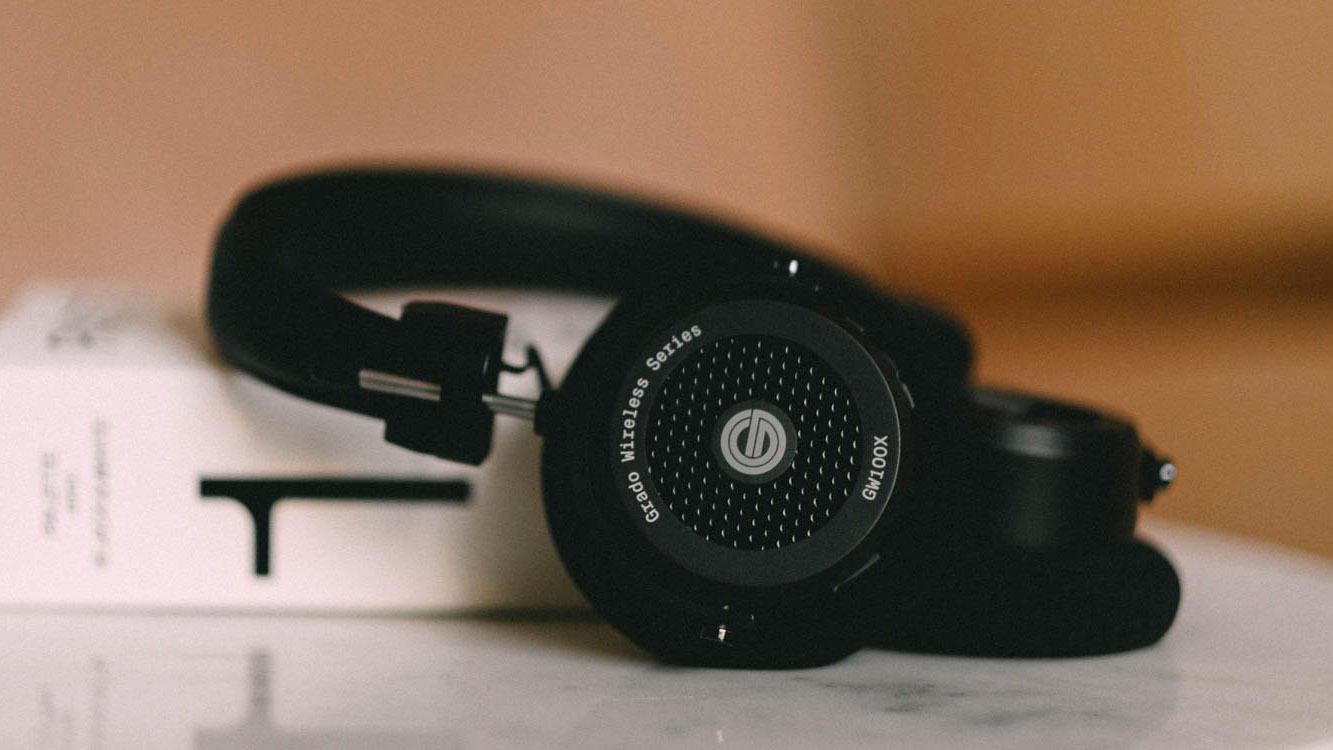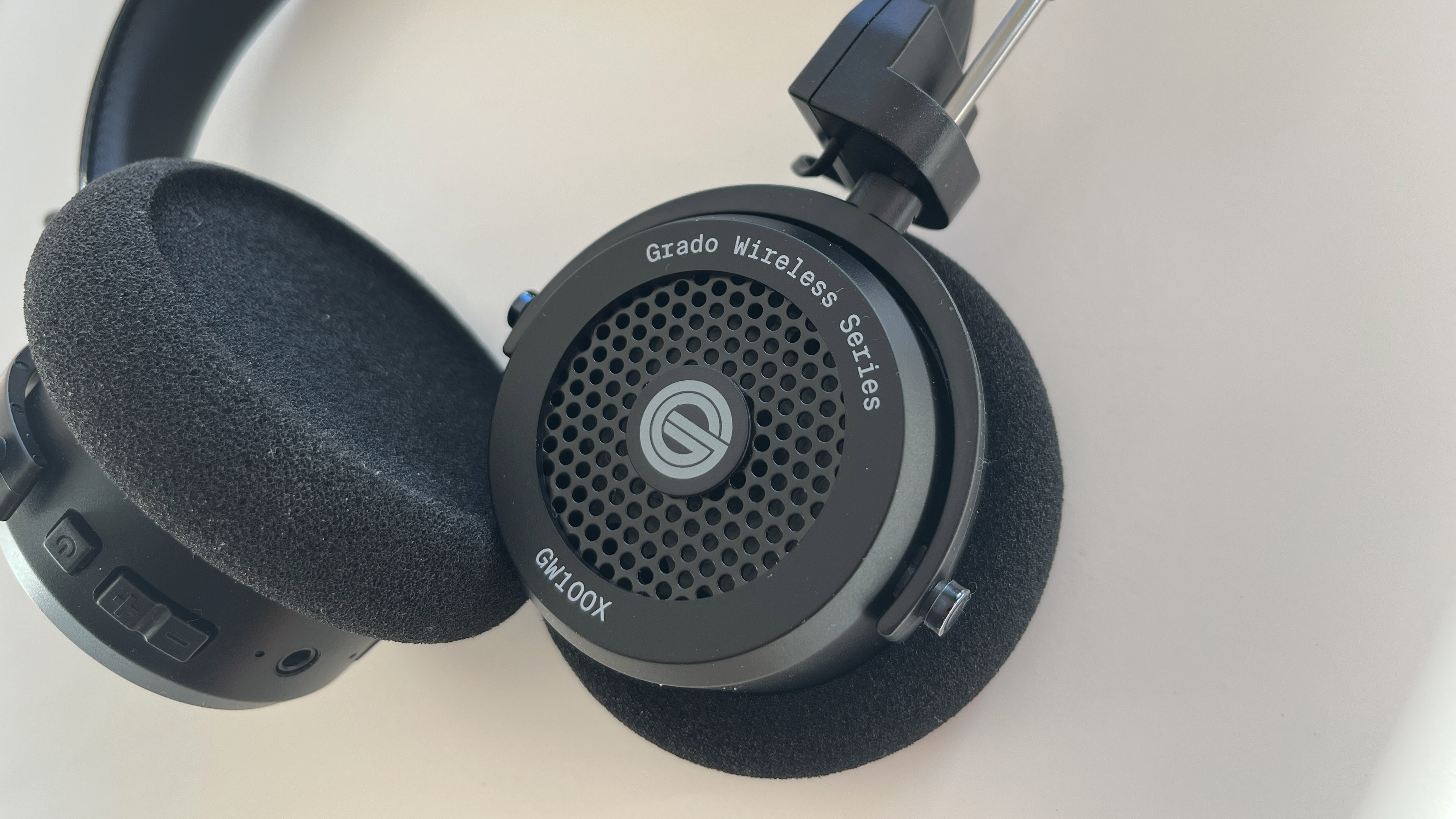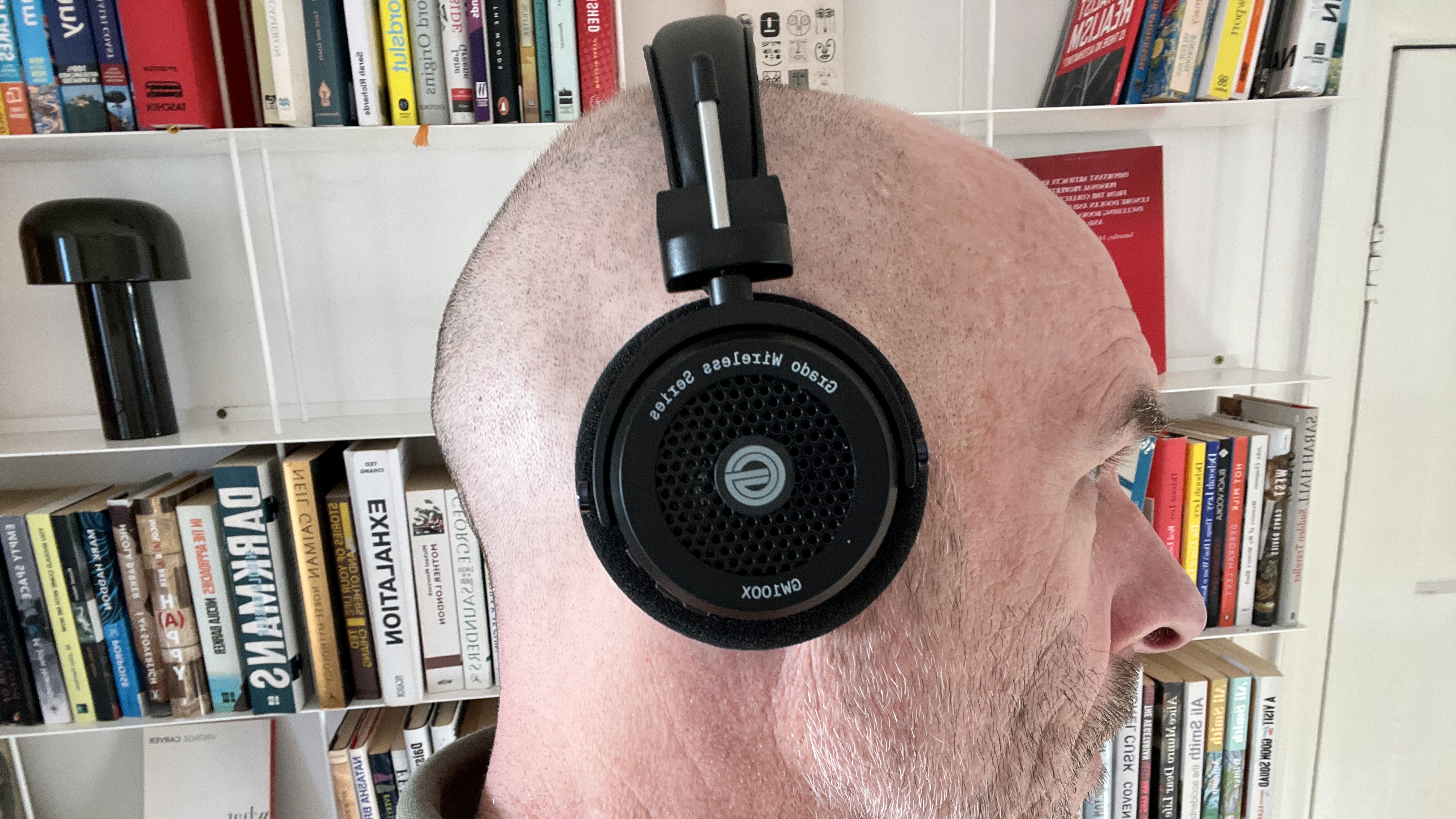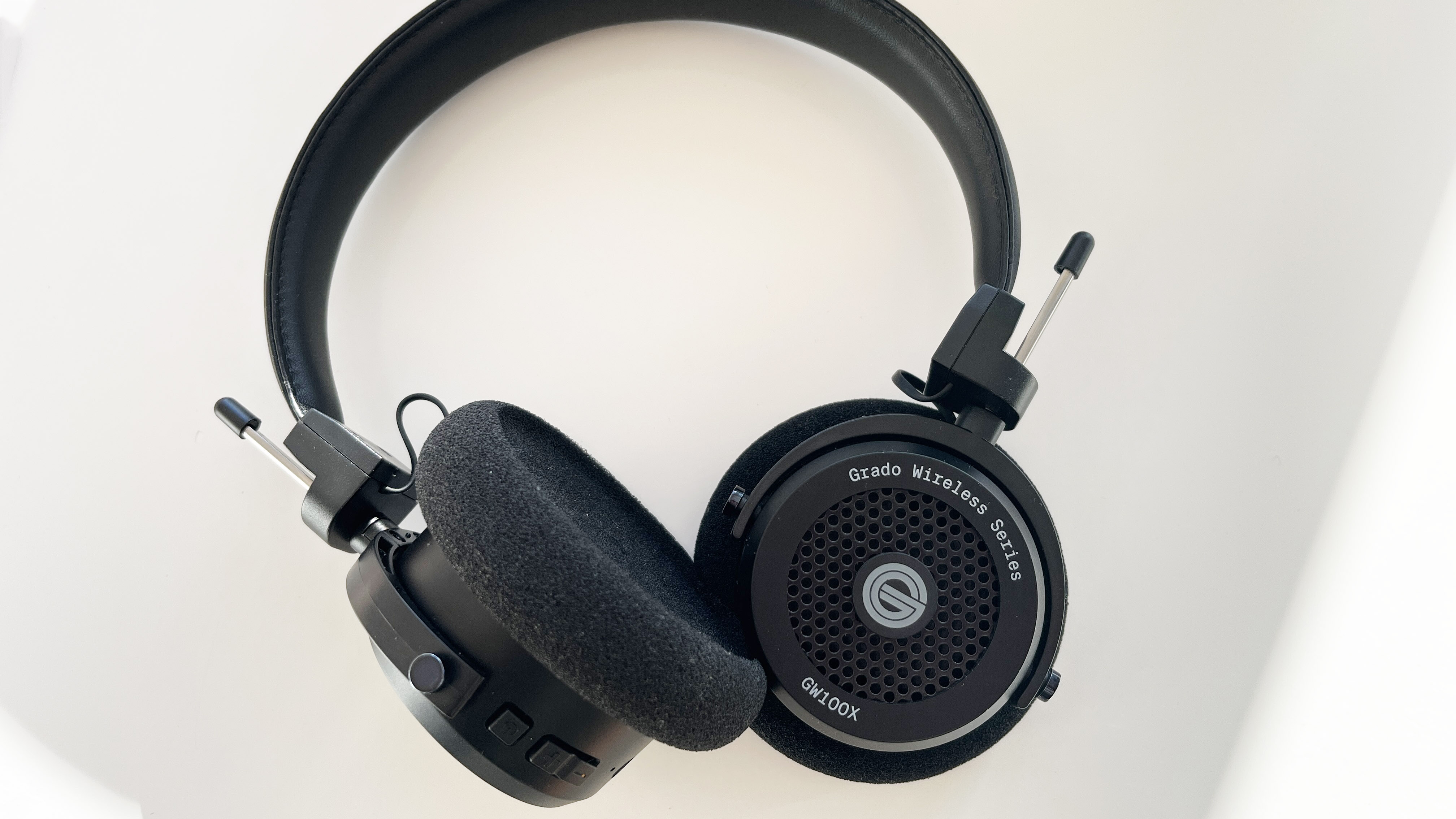Grado GW100x review: open-backed headphones worthy of attention?
The open-back GW100x score high on sound quality, but as highlighted in this review, features are otherwise sparse in a bustling competitive market


The Grado GW100x cover the fundamentals, and in some style - but it takes a little more than that to properly compete in the wireless over-ear market these days.
-
+
Open, balanced and entertaining sound
-
+
Light and comfortable
-
+
Great battery life
-
-
Don’t look or feel special
-
-
Leak sound from their open earcups
-
-
No app, no carry-case, no noise-cancelling
Why you can trust T3

Pick a price. No matter the amount you have in mind, there are at least a few pairs of wireless over-ear headphones vying for your attention.
Although Grado has the sonic reputation to carry the GW100x quite a distance, in a market this competitive just how well do they fare as an overall package?
Grado GW100x: Price & Availability
The Grado GW100x are on sale now, and in the UK they’ll set you back £249. In Grado’s native America they go for $249, while in Australia you’re looking at AU$399 or thereabouts.
At this stage of the game it’s probably easier to make a list of the credible audio brands that don’t have a pair of wireless over-ear headphones to sell you that cost this sort of money. What is Grado offering to try and make you cast your glance in its direction?
Grado GW100x review: Features & What's New?

Sometimes it’s true to say ‘less is more’ - this is not one of those times. ‘Less’, in the case of the feature-set of the GW100x, is definitely less.
That’s not to say the Grado don’t have it where it counts, of course - this is a company that’s established impeccable audio credentials since its inception in the middle of the last century, after all.
So the GW100x are fitted with big 44mm full-range drivers from Grado’s new X-series - they feature low-mass voice-coils and powerful magnetic circuits, and are good for a frequency response of 20Hz - 20kHz. Grado takes a lot of care with driver-matching, and asserts that the drivers in a pair of GW100x are matched to within 0.1dB.
Get all the latest news, reviews, deals and buying guides on gorgeous tech, home and active products from the T3 experts
Wireless pairing is facilitated by Bluetooth 5.2, and there’s compatibility with SBC, AAC and aptX Adaptive codecs. There’s multipoint pairing too, which is handy if you need to keep a connection to a laptop, say, and a smartphone at the same time. They’re extremely rapid to pair with devices after the initial connection, and the wireless range seems more than adequate.
Really, though, that’s about it as far as ‘features’ are concerned. You don’t have to look much further afield, or spend much more money, to secure a pair of wireless over-ear headphones that feature active noise-cancellation (ANC), or a control app, or a carry-case, or quite often all three. What your money buys you when you spend it with Grado is a pair of wireless headphones that do just one thing - and aim to do it as well as possible.
Grado GW100X review: Performance

What’s probably most immediately apparent to anyone familiar with the fundamental sonic signature of Grado’s over-ear headphones is the relatively tight, compact soundstage. That’s not to suggest the GW100x aren’t a spacious listen by the standards of their wireless over-ear rivals - but the work Grado has put in to minimise sound-leakage has demonstrably impacted on the size and definition of the soundstage these headphones are able to generate.
Still, it’s not as if there’s a particular shortage of elbow room or width to the stage - and as far as out-and-out sound quality is concerned, it’s about as big a shortcoming as the GW100x demonstrates. In every other respect, it’s Grado business as usual. Which, in case you’re in any doubt, is a good thing.
The balance of their presentation, for example, is very nicely judged. Low frequencies are deep and substantial, but detailed and textured at the same time - and controlled sufficiently well that recordings enjoy plenty of momentum. The midrange is eloquently informative, alive with fine detail regarding tone and timbre, and with the facility to project a vocalist well ahead of even the most complicated mixes. And the top of the frequency range is similarly articulate, similarly information-rich, and similarly convincing in its tonality. From the top to the bottom of the frequency range, the Grado are poised and even-handed, and a potent listen as a result.
They have no problem delivering the minor harmonic variations evident in a solo piano, and thanks to their low-frequency authority they have no problem expressing rhythms or creating naturalistic tempos. They’re slightly less happy when it comes to expressing the broad dynamics of, say, a symphony orchestra when it charges into a crescendo, but it’s not as if they’re especially inhibited in this respect. It’s simply that some competing designs can put greater distance between the quietest and the loudest elements of a recording with a little more conviction.
Grado GW100x review: Design & Usability

Line up the GW100x against pretty much any of their price-comparable rivals and they look just a little agricultural and unsophisticated. Pick them up, touch their hard and inexpensive-feeling plastics or their minimally padded headband or their prosaic foam earpads, and they feel it too. As far as perceived value is concerned, the design of the Grado is doing them no favours.
Despite the negligible amount of headband padding and the austerity of the earpads, though, the GW100x are comfortable to wear - an all-in weight of a mere 188g does no harm at all in this respect. Getting the earpads in position is easy thanks to the usual Grado ‘friction pole’ headband adjustment mechanism - though ‘mechanism’ is to glorify what’s a fairly rudimentary arrangement, to be honest.
Like every pair of Grado headphones that aren’t the GT220 true wireless in-ears, the GW100x are an open-back design - the wire mesh across the rear of the earcups is one of the few elements of the design that isn’t plastic, in fact. ‘Open-back’ is often shorthand for ‘anti-social’, and that’s emphatically not a good thing if you intend to use your GW100x when out and about. Grado has made an effort to minimise sound leakage, and there’s no denying these headphones let a lot less sound to third-parties than the company’s wired, passive models - but nevertheless, the amount of sound that escapes from the back of the Grado earcups is several orders of magnitude greater than that of any closed-back alternative.
Despite the lack of a control app, it’s straightforward enough to get what you want from the GW100x. The right ear-cup features three plasticky buttons set into its plasticky circumference - the one that sits on its own takes care of ‘power on/off’, 'Bluetooth pairing’, ‘play/pause’, ‘answer/end/reject call’ and ‘summon voice assistant’. Or, at least, it does when you’ve committed the number and length of presses required to memory. The other two, which are arranged in a strip, handle ‘volume up/down’ and ‘skip forwards/backwards’.
This earcup also houses the USB-C input for battery charging - keep volume levels the right side of ‘reasonable’ and the GW100x will run for 46 hours, easily. There’s a 3.5mm input for hard-wired listening, and a little LED to give a visual indication of what’s going on as regards pairing and battery life.
The Grado interact with your source player’s native voice-assistant without difficulty, and it’s a similar story where telephony is concerned. Call quality is crisp and clear at both ends of a conversation.
Grado GW100x review: Verdict

If this was purely about sound, the Grado GW100x would be looking at tops marks - but where products like this are concerned it isn’t, not by a long chalk. If your list of requirements begins and ends with ‘great sound’, Grado has you covered - but if you’re expecting active noise-cancelling, or a control app, or just a little luxuriousness where material and finish are concerned, you may need to look elsewhere.
Also consider
They may all cost a little more than the GW100x, and they all be ‘different’ rather than ‘better’ where out-and-out sound quality is concerned, but there are wireless over-ear models from (just off the top of my head) Bose, Sennheiser, Sony and Technics that all deserve your consideration (see shopping widget below for current pricing).
They all have a more expansive feature set than the Grado, they all have superior perceived value, and there’s every chance they’ll offer greater pride of ownership too. The Grado GW100x have it where it counts in purely sonic terms - but whether or not that’s enough to tip your particular balance is a question only you can answer.
Simon Lucas is a freelance technology journalist and consultant, with particular emphasis on the audio/video aspects of home entertainment. Before embracing the carefree life of the freelancer, he was editor of What Hi-Fi? magazine and website – since then, he's written for titles such as Wired, Metro, the Guardian and Stuff, among many others. Should he find himself with a spare moment, Simon likes nothing more than publishing and then quickly deleting tweets about the state of the nation (in general), the state of Aston Villa (in particular) and the state of his partner's cat.
